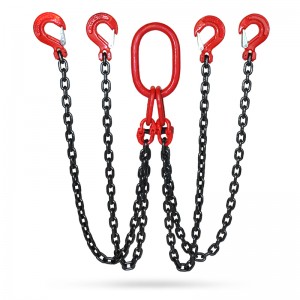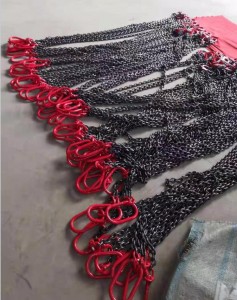The frequency of inspections, maintenance, and load testing for lifting chain tools can vary depending on several factors, including the type of equipment, its usage, and the manufacturer’s recommendations. However, here are some general guidelines:
Inspections: Lifting chain tools should be visually inspected before each use. This inspection should include checking for any signs of wear, damage, or deformation, such as cracks, bent components, or worn chain links. Pay close attention to critical parts like hooks, chains, and load-bearing components. If any issues are detected during the pre-use inspection, the equipment should be taken out of service and properly evaluated and repaired before further use.
Maintenance: Regular maintenance is crucial to ensure the safe and reliable operation of lifting chain tools. The specific maintenance tasks and intervals can vary based on the manufacturer’s recommendations and the equipment’s usage. Generally, a periodic maintenance schedule is followed, which includes tasks such as lubrication of moving parts, checking and tightening fasteners, and inspecting and replacing worn or damaged components. Consult the manufacturer’s guidelines or the equipment’s user manual for detailed maintenance instructions and recommended intervals.
Load Testing: Load testing is performed to verify the lifting capacity and safety of the lifting chain tools. Load testing should be carried out at specific intervals or whenever there are significant changes to the equipment, such as repairs or modifications. The load testing procedure typically involves applying a known load to the equipment and ensuring that it can safely lift and hold the load without any signs of failure or deformation. The load testing process should be conducted by qualified personnel following established industry standards and guidelines.
It is important to note that certain industries or regulatory bodies may have specific requirements for the inspection, maintenance, and load testing of lifting chain tools. For example, in some regions, annual inspections and load testing by a certified inspector may be mandatory. It is advisable to consult relevant regulations, standards, and local authorities to ensure compliance with applicable requirements.
Furthermore, it is essential to maintain proper records of inspections, maintenance activities, and load testing results. These records help demonstrate compliance, track the equipment’s history, and provide a reference for future inspections and maintenance.
In summary, regular visual inspections should be performed before each use, and maintenance tasks should be conducted according to the manufacturer’s recommendations. Load testing should be conducted at specific intervals or when significant changes occur to the equipment. Adhering to these practices helps ensure the safe and reliable operation of lifting chain tools.
Post time: Sep-14-2023







